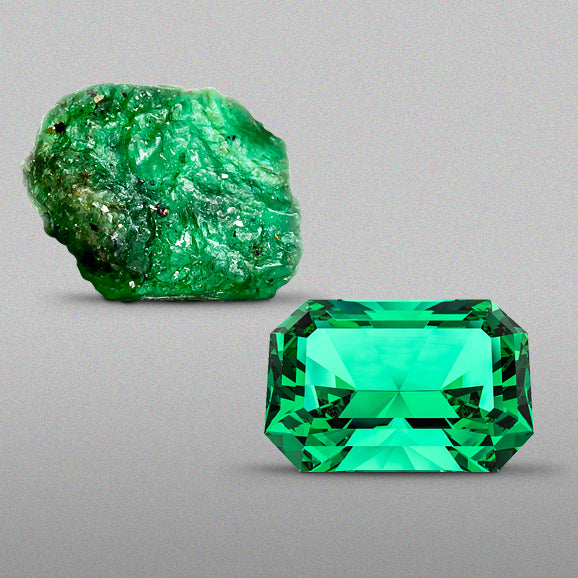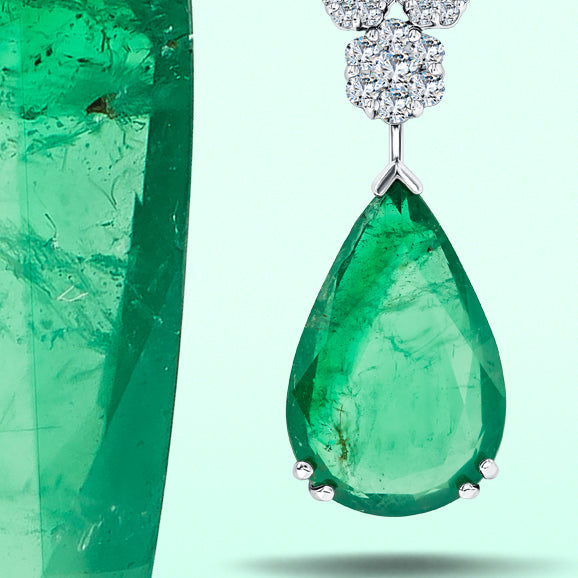Emeralds In Jewellery
Emerald is the most popular of all the coloured gems. In the United States, given that the definition of emerald is based on colour there is sometimes dispute as to what a stone might be. If a gem is coloured by chromium, then they say the stone is an emerald, but if the colouring is due to vanadium, they insist that the stone is called green beryl. In Europe, we do not make this distinction, and any green beryl is called emerald. This means that, as a buyer, you should insist on buying a stone with a rich green colour, not a faint pale green.
Emerald has a Mohs Scale hardness of 7.5 to 8; usually, this would be considered hard enough for most jewellery purposes. However, most emeralds contain several inclusions or imperfections in the crystal which make the stone brittle and more likely to break. Most emeralds have flaws that can be seen with the naked eye.
Most emeralds are treated to improve their appearance. The goal is to fill the cracks in the gem and reduce their visible effect. While these treatments might improve the visual appearance of the gem, they do nothing for the strength. Over time, many treatments can alter in colour and deteriorate.
Due to the inherent fragility of emeralds, it is best to use them in pieces not subject to knocks and impacts such as earrings or pendants. If used in a ring, then it should be used only on special occasions.
Cleaning of emeralds should be carried out carefully. Use of chemicals or ultrasonic devices is not recommended as these can remove the treatments used to minimise the appearance of fractures. The best cleaning is with warm, slightly soapy water and allowing the stone to air dry. Clean only occasionally, when necessary.
Enjoy the green fire of the emerald with all its flaws. The owner of a piece of emerald jewellery will be proud of it. The unmistakable colour is loved everywhere, and the owner of a beautiful piece of emerald jewellery will always have reason to be joyful!



